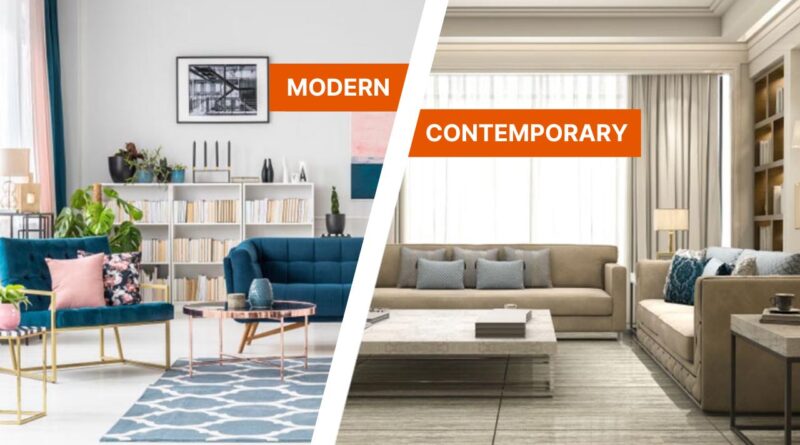Modern vs Contemporary Design
The term “modern design” specifically relates to the early to the mid-20th century. Le Corbusier, Charles and Ray Eames, and Florence Knoll are some of the main figures in this style, which is a predecessor to modern design. At the height of the contemporary art movement, Scandinavian and German Bauhaus design were influential in the development of the modern design. Simple form and function, which are regarded equally under this style, were the main focus. Consider earthy colours, sleek silhouettes, and natural materials like leather, stone, and wood. Mid-century modern evolved
from contemporary (which, you got it, was developed in the 1950s and 1960s), however, in the realm of interior design, the term “modern” sometimes embraces both. Modern architecture prioritises function over aesthetics in a minimalist style. Their rectangular shapes, lack of ornamentation, and whitewashed exteriors make them easily identifiable. A lot of contemporary residences were also constructed with the surrounding environment in mind. For instance, the contours of a roof or an overhang could resemble those of the
landscape. With horizontal constructions that are low to the earth and big glass windows or walls, modern homes further combine a love of nature.
Contrary to modern design, contemporary design is an ongoing process that reflects the prevailing fashions of contemporary design. It incorporates elements of modernism, minimalism, Art Deco, and other international styles without overly emphasising any one of them. Despite the fact that modern design is by its very nature somewhat ambiguous, there are a few characteristics that aid in its definition. Some of the key elements include neutral colour schemes, stark minimalism, clean lines, and organic silhouettes. Expect to see natural textures like hemp or jute coupled with metals like nickel, steel, and chrome. Contemporary houses stand out because they combine several architectural styles. They have open floor plans, huge windows, and minimal ornament of modern residences, but they also have a free-form composition that is not typical of modernist design. Modern technology allows architects to create non-linear forms. Because of this, Contemporary dwellings frequently feature dramatic curves and improbable proportions. By concept, contemporary refers to what is currently popular in design. This statement makes it more ambiguous and challenging to define. On the other side, modern design has a distinctive aesthetic that places an emphasis on clean lines, cosy neutrals, and balance.


Thanks for the interesting things you have exposed in your writing. One thing I want to touch upon is that FSBO connections are built after some time. By releasing yourself to the owners the first saturday their FSBO can be announced, ahead of the masses start off calling on Wednesday, you build a good relationship. By giving them resources, educational materials, free reports, and forms, you become a strong ally. By using a personal affinity for them and also their circumstances, you generate a solid connection that, many times, pays off if the owners opt with a representative they know in addition to trust – preferably you actually.